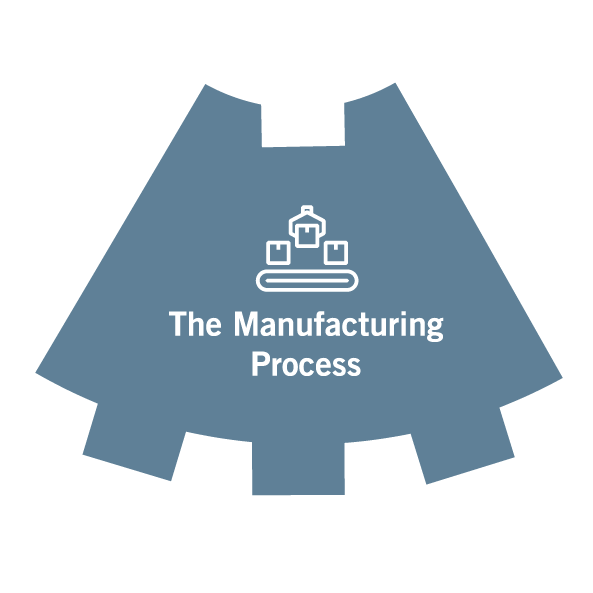The enforcement trends of 2023 have continued into 2024, especially with respect to the U.S. Consumer Product Safety Commission (CPSC or Commission) and the U.S. Food and Drug Administration (FDA or Agency). Both have ramped up enforcement activities despite obstacles such as delayed budget approvals and the imminent industry push back due to recent Supreme Court rulings.
CPSC: Civil Penalties Remain a Priority
The CPSC remains committed to its enforcement agenda in 2024. Although it has only announced one new civil penalty agreement this fiscal year, the dollar amount is significant.[1] The Commission has reiterated that this remedy is an essential tool for regulatory enforcement and this most recent penalty makes that message clear. The CSPC also remains focused on the reporting obligations of manufacturers, importers, and retailers of products that “could create a substantial product hazard” or “unreasonable risk of serious injury or death.” It has shown a new appetite for pursuing litigation against companies that resist voluntary recalls or refuse to pay the sometimes steep penalties imposed by the Commission. Finally, the Commission continues to prioritize safety standards for certain product categories, including batteries, water beads, all-terrain vehicles, and infant and toddler products.
Failure to Timely Report Under the Consumer Product Safety Improve Act (CPSIA)
Under Section 15 of the CPSIA, a manufacturer, importer, distributor, or retailer of a consumer product within the CPSC’s purview must inform the CPSC “immediately” upon the receipt of information that “reasonably supports the conclusion that such product:”
- Fails to comply with an applicable consumer product safety rule or with a voluntary consumer product safety standard upon which the Commission has relied under Section 9;
- Fails to comply with any other rule, regulation, standard, or ban under [the CPSIA] or any other Act enforced by the Commission;
- Contains a defect which could create a substantial product hazard . . .; or
- Creates an unreasonable risk of serious injury or death.[2]
The CPSC has interpreted “immediately” to mean that a company has 24 hours to report discernable violations. If those violations are unclear, a company has ten (10) business days to investigate, unless it can demonstrate that a longer time is reasonably necessary.
The penalty for “knowingly”[3] violating Section 15’s reporting requirements can be hefty, with statutory civil penalties of up to $120,000 per knowing violation and $17,150,000 for a series of related violations.[4] Even with the CPSC’s guidance, there is no bright-line rule dictating when a company has a duty to report. Best practices (and the CPSC) favor a more conservative approach: “when in doubt, report.”
Following historically low levels of enforcement under the Trump Administration,[5] the CPSC announced its intent to reinvigorate enforcement efforts by imposing, among other things, steep civil penalties for late reporting. So far, the CPSC has kept this promise, as civil penalty amounts have increased since President Biden’s appointees assumed control of the CPSC in 2021. As for 2024, the CPSC shows no signs of softening this approach. Companies are encouraged to remain vigilant with respect to their internal compliance protocols and external reporting obligations.
Congress Aims to Bolster the CPSIA
The CPSC’s stated goals for 2024 appear to have significant backing in the legislature. Congress approved Doug Dziak as the CPSC’s newest commissioner in March and introduced legislation aimed at expanding the CPSC’s enforcement powers under the CPSIA in January of 2024. This legislation, introduced by representative Janice Schakowsky (D-IL) and Senator Peter Welch (D-VT) as the Consumer Advocacy and Protection (CAP) Act, is indicative of Congress’s support for the CPSC’s enforcement efforts.[6]
The CAP Act seeks to deter violations of the CPSIA by imposing harsher financial penalties on non-compliant companies. The legislature introduced the CAP Act after the CPSC Commissioner raised concerns that limitations on “the CPSC’s civil penalty authority … is a serious impediment to the agency’s efforts to deter large corporate actors from violating consumer protection laws.”[7] This sentiment raised some eyebrows, especially after the CPSC announced a $19,065,000 civil penalty settlement agreement with Peloton for its purportedly repeated failures to report defects in its Tread+ treadmill which—in one tragic instance—resulted in the death of a child.
The CAP Act bolsters the CPSC’s ability to impose civil penalties on non-compliant companies by:
- Removing the maximum civil penalty cap for a related series of violations;
- Increasing the per-violation cap on civil penalties from $120,000 to $250,000; and
- Changing the inflation adjustment formula for civil penalties, so that the CPSC may adjust civil penalties more regularly and expediently.
The bill is currently before the House Subcommittee on Innovation, Data, and Commerce, but shows little promise of success for want of bipartisan support. Nevertheless, the introduction of the CAP Act is a signal to manufacturers, importers, and distributors that the CPSC has the full support of many with respect to its aggressive enforcement agenda. With this support, the CPSC has given no indication of slowing its enforcement efforts.
Though the CPSIA and CAP Act seem like a problem only for manufacturers, the CPSC has not spared retailers from this enforcement paradigm. For example, in September of 2023, the CPSC announced a $9,000,000 civil penalty against a wholesale retailer that failed to report a fire hazard in certain air conditioners sold in its stores. The retailer maintained that it relied on the manufacturer to report the hazard to the CPSC. However, Section 15(b) requires that the retailer, manufacturer, and distributor report any knowledge of such hazardous defects. Moreover, retailers should ensure they are not selling previously recalled products. In 2022, the parent of a well-known clothing chain agreed to pay $13,000,000 for selling approximately 1,200 recalled products. Retailers are feeling the increasing burden of the CPSIA, which previously applied—for the most part—exclusively to manufacturers and distributors.
Retailers, manufacturers, and distributors are encouraged to collaborate on investigating and reporting any potentially hazardous products. Companies within the CPSIA’s purview should take care to implement robust compliance programs to limit their risk; a focus on timely reporting is of immense benefit. Failure to take preventative steps will likely result in significant civil penalties given the current legislative and regulatory climate.
Rise in Product Recalls in the U.S.
The CPSC is not hiding the ball with respect to its aggressive enforcement efforts and industry actors are heeding the Commission’s warnings. According to the U.S. Recall Index report from Sedgwick, 2024 marks an aggressive year of total recalls in the U.S., with 909 recalls across five key industries in the year’s first quarter. This marks a five-year high for total recalls in a single quarter. 92 of these recalls were consumer products—a 5.7% increase from the previous quarter for the industry.
This increased recall activity demonstrates that the CPSC’s declared objectives for 2024 are far more than empty threats. While product recalls can have lasting impacts on a company’s reputation and bottom line, a dangerous product can be far more damaging. Accordingly, voluntary recalls—though a hard pill to swallow—are beneficial to a company when faced with a potentially hazardous product on the market. In addition, as the CPSC’s aggressive tactics persist, companies are increasingly inclined to take such voluntary actions to avoid further scrutiny from the CPSC and other regulators—even when a voluntary recall may not be warranted.
CPSC Operating Plan for FY2024
On November 8, 2023, the CPSC approved its FY2024 Operating Plan (the “Plan” or “Operating Plan”), which details the Commission’s priorities and activities for the upcoming year. Of note, the Commission identified certain products of focus for updated safety standards, including button and coin cell batteries, infant and toddler sleeping apparatuses, water beads, and all-terrain vehicles (ATVs). Companies that manufacture and sell these products are no strangers to heightened oversight from regulators, and the Commission’s stated goals with respect to updated standards are generally welcomed by key players in the consumer product space.
The CPSC has also renewed its interest in a largely abandoned avenue of enforcement: litigation. Specifically, the plan seeks to prioritize mandatory recalls through litigation “if necessary,” and formalized review and enforcement against “imminently hazardous” products through Section 12 of the CPSIA. Historically, the Commission has avoided litigation as an enforcement tool, but that approach may be changing.
As a side note, while not part of the Operating Plan, the CPSC has also shown a willingness to head to court when companies are unwilling to agree to the steep “failure to report” penalties it has issued. While the number of such actions are low to date, indicators are they will swell as 2024 goes on.
Products of Focus
Button and Coin Cell Batteries
Congress enacted Reese’s Law in August 2022, which sought to protect children from the ingestion of button or coin cell batteries. The CPSC codified Reese’s Law under 16 C.F.R. § 1263 in late 2023, with the rule taking effect in March 2024. The Rule imposes two primary requirements: (1) labeling requirements that clearly identify the dangers of ingesting the batteries and instructions to keep them out of children’s reach, and (2) “performance requirements,” mandating that products containing these batteries secure the battery in a manner that minimizes the risk of ingestion. Still pending is a potential revision to 16 C.F.R. § 1110, which governs importers’ compliance certifications with both the CPSC and U.S. Customs. If promulgated, foreign importers of products with button batteries will have to certify that their products comply with these components of Reese’s Law.
Infant and Childrens’ Products
The CPSC intends to finalize mandatory standards for nursing pillows, infant and toddler rockers, and infant support cushions. The CPSC has yet to release these standards but manufacturers, retailers, and distributors in the industry should track any related announcements.
The CPSC also intends to improve safety standards for water beads. Like button batteries, water beads purportedly pose significant risks to small children who ingest them.[8] The CPSC has previously cautioned that water beads, which start small but expand 100x their original size when exposed to water, can cause serious internal injuries or death when ingested by children. Now, the CPSC has publicly confirmed that most of these water beads contain toxic acrylamides, despite some manufacturers labeling their products as “non-toxic.”
ATVs
The CPSC published a final rule in January of 2024 to amend its safety standards for ATVs.[9] The final rule requires new technical specifications and owner’s manual requirements. Specifically, the rule requires that certain “touch points” of the vehicle remain under a specified temperature to mitigate burns, removal of the maximum recommended tire pressure of 10psi, and structural reinforcement mechanisms for fuel system components. The rule additionally maintains paper manual requirements regardless of the availability of electronic manuals. The final rule is effective January 1, 2025.
The CPSC’s Litigation Enforcement Strategy
Petitioning the Court for Forced Recalls
When the CPSC determines that a company must recall a product, it will typically reach an agreement with the company for a voluntary recall. If an agreement is not reached, the CPSC has the option to initiate an administrative proceeding before an Administrative Law Judge (“ALJ”) under Section 15 of the CPSIA. Administrative proceedings are governed by the Administrative Procedure Act and largely resemble a standard civil trial. After a hearing on the merits, the ALJ will submit an “initial decision” to the Commission for final review. The Commission will then hear any appeals from the company and enter its final order concerning a recall of the subject product. Administrative proceedings of this nature are extremely rare because it is typically in a company’s best interest to work with the Commission rather than against it. However, the CPSC has indicated a renewed interest (and sought funding) for these administrative proceedings for fiscal year 2024.
An even rarer proceeding is an action brought under Section 12 of the CSPIA. Section 12 allows the CPSC to circumvent administrative proceedings from Section 15 and directly petition a federal district court concerning any product that is “imminently hazardous” (not to be confused with the “substantial hazard” standard under Section 15).[10] The CPSC rarely resorts to filing an administrative complaint under Section 15 and has not initiated a Section 12 action since the 1980s.[11] However, with respect to the Operating Plan, the Commission unanimously adopted an amendment memorializing the CPSC’s enforcement against imminently hazardous products. Thus, a slight shift in the Commission’s enforcement tactics may be on the horizon.
Taking on eCommerce
In 2021, the CPSC filed an administrative complaint against Amazon, alleging its “Fulfilled by Amazon” program, that incorporates independent, third-party merchants into Amazon’s supply chain, qualifies it as a distributor under the CPSIA. Such a designation means that Amazon is responsible for reporting and recalling any hazardous product sold on its platform under Section 15. In response, Amazon argued it is exempt from the CPSIA under an express carve-out for third-party logistics providers.[12] The ALJ disagreed with Amazon, finding on summary disposition that products sold through the program qualify Amazon as a distributor. Amazon appealed this decision to the Commission, which heard oral arguments on December 14, 2023. The Commission is expected to render a final order within the year.
Amazon’s sales account for roughly 40% of total U.S. eCommerce sales in the year 2024. 60% of these sales are placed through the “Fulfilled by Amazon” program.[13] Due to its unique structure, regulators have struggled to place blame on Amazon for hazardous products supplied by the program’s independent sellers. A distributor designation from the CPSC would change that, exposing Amazon to a new realm of regulatory liability for roughly 60% of its placed products. This could be detrimental to Amazon’s operations and transformative for the industry at large.
It is difficult to predict the exact impact the CPSC’s decision will have on eCommerce platforms. However, it is easy to assume that the CPSC is posturing to hold domestic firms accountable for non-compliant, international manufacturers that fall outside the Commission’s reach. The CPSC’s concerns about regulating international manufacturers that employ eCommerce platforms are not new.[14] Its Operating Plan echoes these concerns by focusing on projects that would intercept imported products at U.S. points of entry and emphasizing its “continued cooperation” with foreign countries like China, “as the largest source of U.S. consumer products.”[15]
The days of the standard supply chain are no more. Companies like Amazon, Temu, Etsy, and Ebay have built online marketplaces that connect the consumer directly to the supplier. As a result, a variety of distribution networks command the global market. These variations all bring new issues that regulators struggle to manage. The CPSC’s administrative action against Amazon, therefore, could very well be the Commission’s attempt to use an antiquated enforcement tool to solve a modern problem. If successful, In re Amazon will likely be the first of many more enforcement actions against eCommerce platforms.
And, of course, the Supreme Court’s overruling of Chevron may impact the CPSC’s efforts under its litigation strategy and Operating Plan.[16] Historically, the CPSC and similar regulators enjoyed unfettered authority in rulemaking by virtue of the Supreme Court’s landmark ruling in Chevron U.S.A., Inc. v. Natural Resources Defense Council, Inc. In Chevron, the Court held it would not second guess an agency’s interpretation and application of its enacting legislation. This opinion was recently overturned in Loper Bright Enterprises v. Raimondo, granting lower courts the leeway to exercise their independent judgment in reviewing agency action.[17] Through Loper,the Supreme Court has created a more opportunistic environment to challenge regulators. Judicial challenges to the proposed rulemaking above and any follow-on litigation are likely to spike in the wake of this historic case.
FDA: Facility Inspections Continue to Rise
In the past year, the FDA has continued to focus enforcement efforts on cGMP regulations, particularly in the context of food, pharmaceutical products, and medical devices. As the effects of the COVID-19 pandemic continue to wane, FDA inspection of domestic and foreign establishments has increased. In 2022, the FDA conducted approximately 15,443 inspections; in 2023, that number rose to 18,169 (a 17.6% increase). Not surprisingly, given the increased number of inspections, there was also an increase between 2022 and 2023 in the number of establishment inspections classified as Official Action Indicated (OAI) or Voluntary Action Indicated (VAI) – the two classifications that the FDA uses to indicate objectionable conditions or practices observed during the inspection. {Consider citations for the statistics in this paragraph.} Therefore, both domestic and foreign manufacturers of FDA-regulated products should be particularly vigilant about ensuring compliance with cGMP regulations and preparing their facilities for routine FDA inspections.
Enforcement Focus on Foreign Supplier Verification Program
Throughout the past year, we have noted an increased focus on the FDA’s Foreign Supplier Verification Program (FSVP) regulations, based on publicly-available FDA Warning Letters. The FSVP regulations were issued in 2016 as part of the FDA’s implementation of the FDA Food Safety Modernization Act (FSMA), and are focused on ensuring the safety of human and animal food imported into the U.S. In general, the regulations require companies that import food (including animal food) to have a program in place to verify that their foreign suppliers are producing food in a manner that provides the same level of public health protection as provided by FDA regulations. To that end, the FSVP regulations require importers to determine known or reasonably foreseeable hazards associated with any imported foods, use the hazard risk analysis to approve suppliers and determine appropriate supplier verification activities, and conduct corrective actions if deficiencies are observed. Importers are required to develop an FSVP for each supplier and each food imported into the U.S.
The FDA’s increased focus on enforcing its FSVP regulations has taken several forms. First, the FDA has been conducting facility inspections that are specifically focused on FSVP compliance. Second, the FDA has demonstrated a willingness to issue Warning Letters to firms for allegedly deficient FSVP programs, particularly in cases where the firm’s responses to FDA observations documented in an FDA Form 483 are incomplete or insufficient, or where a firm has requested what the FDA believes is an unreasonable amount of extra time to prepare FSVP programs. This more aggressive enforcement approach is consistent with the FDA’s practice of focusing on non-compliance issues that present a risk of significant harm to consumers (e.g., contamination outbreaks). U.S. companies that are the importer of record for foods (including animal foods) should consider an internal review of their FSVP compliance programs to ensure that the FDA’s regulatory requirements are being satisfied.
Enforcement Focus on Cosmetics Products
In the near future, we expect that the FDA will focus enforcement efforts on cosmetics products, due to the enactment of the Modernization of Cosmetics Regulation Act of 2022 (MoCRA), which increases FDA oversight of cosmetics products. Under MoCRA, cosmetics companies are now subject to requirements similar to what the FDA requires for other products it regulates, including facility registration and product listing requirements, future cGMP requirements, serious adverse event reporting and recordkeeping, and safety substantiation. MoCRA also expands the FDA’s enforcement authority by allowing the agency to mandate recalls of cosmetics products and to suspend a facility’s registration if the agency determines that a cosmetics product manufactured at the facility has a reasonable probability of causing serious adverse health consequences.
Most of the substantive provisions of MoCRA took effect on December 29, 2023. Throughout the first half of 2024, we did not observe an uptick in MoCRA enforcement (based on Warning Letters issued), which likely is due to the fact that the FDA previously issued MoCRA guidance that communicated the FDA’s intent to delay enforcement of MoCRA’s facility registration and product listing requirements until July 1, 2024 to allow industry to come into compliance. However, there is evidence that the enforcement tide is beginning to turn. In June 2024, for example, the FDA mentioned MoCRA for the first time in a Warning Letter to a drug manufacturer. Although the Warning Letter focused on alleged violations of cGMPs for finished pharmaceuticals, it also mentioned that the facility manufactured cosmetics and noted that MoCRA requirements may apply.
Going forward, we expect that MoCRA will be a focus of FDA inspections, and particularly at facilities (such as the one subject to the Warning Letter) that manufacture a combination of pharmaceutical and cosmetics products. Further, because of the grace period already offered to come into compliance with MoCRA’s requirements, the FDA may give manufacturers less time than usual to correct violations before a subsequent reinspection and stepped-up enforcement (e.g., a Warning Letter).
Looking forward, companies subject to FDA regulation should ensure cGMP compliance (and for cosmetic companies, once implemented, given that proposed rules are mandated by MoCRA by the end of 2024, though we would not be surprised if this date slips) and familiarize themselves with the FDA’s Manual of Compliance Policy Guides (CPGs). The CPGs are intended to advise the FDA staff as to the Agency’s strategy when assessing and enforcing industry compliance. They are regularly updated and serve as a baseline for companies to consider when evaluating compliance with applicable standards and guidance.

[1] In November of 2023, the CPSC announced a $16,000,000 civil penalty for failure to report serious burn hazards.
[2] 15 U.S.C. § 2064
[3] 15 U.S.C. § 2064(b); the CPSIA defines “knowingly” as either “actual knowledge” or “knowledge deemed to be possessed by a reasonable man who acts in the circumstances, including knowledge obtainable upon the exercise of due care to ascertain the truth of representations.”
[4] 15 U.S.C. § 2068; https://www.govinfo.gov/content/pkg/FR-2021-12-01/pdf/2021-26082.pdf (amending § 2068 for inflation).
[5] Todd C. Frankel, Product Recalls Under Trump Fall to Lowest Level in 16 Years, but New Signs Emerge of a Tougher Regulator, Washington Post (January 13, 2020), https://www.washingtonpost.com/business/2020/01/13/product-recalls-under-trump-fall-lowest-level-16-years-new-signs-emerge-tougher-regulator/.
[6]H.R. 7096, https://www.congress.gov/bill/118th-congress/house-bill/7096?s=1&r=4; S.3667, https://www.congress.gov/bill/118th-congress/senate-bill/3667?s=1&r=1.
[7] Statement of Chair Alexander Hoehn-Saric, https://www.cpsc.gov/About-CPSC/Chairman/Alexander-Hoehn-Saric/Statement/Statement-of-Chair-Alexander-Hoehn-Saric-on-the-CPSC%E2%80%99s-Settlement-with-TJX (August 2, 2022).
[8] CPSC Announces New Hazard Posed by Deadly Water Beads, Warning Consumers about Products Containing Toxic Acrylamide (March 19, 2024), https://www.cpsc.gov/s3fs-public/CORT-Statement-on-Water-Beads-Warnings-3-19-2024.pdf?VersionId=OgfkiYs1UGA2CiE8YVUjp_i6eOIiWgYn.
[9] 89 FR 4188; CPSC Docket No. -2017-0032
[10] 15 U.S.C. § 2061.
[11] See Consumer Fed’n of Am. v. Consumer Prod. Safety Comm’n, 990 F.2d 1298, 1300 (D.C. Cir. 1993) (discussing United States v. American Honda Motor Co., Civ. No. 87–3525, 1987 WL 33507 (D.D.C. Dec. 30, 1987) as the most recent “imminent hazard” lawsuit initiated by the Department of Justice).
[12] 15 U.S. § 2052(b)
[13] Sara Lebow, Amazon will surpass 40% of US ecommerce sales this year, despite competition in grocery, home improvement, eMarketer (April 17, 2024), https://www.emarketer.com/content/amazon-will-surpass-40-of-us-ecommerce-sales-this-year; Mickey Toogood, Amazon selling stats, Amazon.com (May 10, 2024), https://sell.amazon.com/blog/amazon-stats#:~:text=Third%2Dparty%20seller%20products%20account,billion%20in%20global%20annualized%20sales.
[14] See the CPSC’s Report on Potential Hazards Associated with Emerging and Future Technologies (September 2022), https://www.cpsc.gov/s3fs-public/EmergingHazardsReport_Sep2022Final.pdf?VersionId=KPMiZHFdBG_04VGcc9GkmChQYw2QNt0l (“The eCommerce industry continues to grow worldwide at dramatic rates. In turn, there are increased product safety concerns surrounding the marketing and sale of consumer products domestically and how products enter the distribution chain from foreign markets.”).
[15] Consumer Product Safety Commission Fiscal Year 2024 Operating Plan (November 8, 2023), https://www.cpsc.gov/s3fs-public/FY2024OperatingPlan.pdf?VersionId=N46Kg9oFJtn_Slys4cdzuQYza29oFynS.
[16] Chevron U.S.A., Inc. v. Natural Resources Defense Council, Inc., 467 U.S. 837 (1984).
[17] Loper Bright Enterprises v. Raimondo, No. 22-451, slip op. 34 (June 28, 2024).








 />i
/>i

